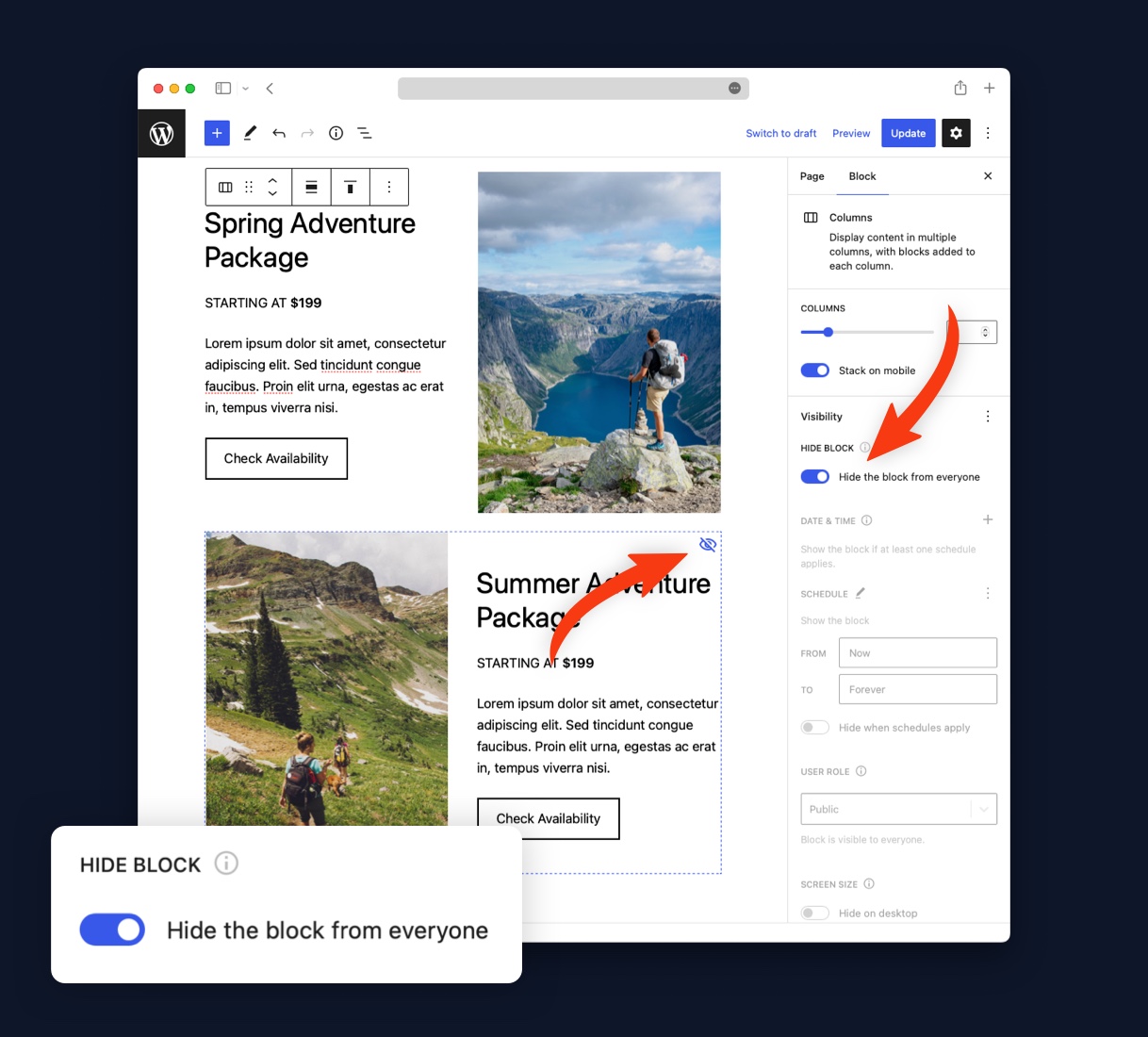Block Visibility — Conditional Visibility Control for the Block Editor: Breakdown

The Block Visibility plugin allows users to manage the visibility of their content blocks on a page or post. It works by allowing the user to set certain “conditions” (such as user roles) that must be met in order for a block to be displayed. This provides the user with greater control over who can view which blocks of content in order to personalize the experience.
The plugin is incredibly easy to use. It allows users to control the visibility of blocks in two ways. The first is through the use of “invisible” blocks. These blocks are only visible when certain conditions are met, so the user can set these conditions in order to customize their content blocks. The second way is through the use of “visibility” settings. With this feature, users can choose to display a block depending on certain conditions, such as user roles and page locations.
Furthermore, the plugin also works well with custom blocks, so users can create specialized blocks to further customize their content blocks. By using custom blocks, users can set visibility rules in order to control how and when their custom blocks are displayed on the page or post.
The Block Visibility plugin also comes with several features that make it easier and faster for users to control the visibility of their content blocks. These features include a “quick visibility” tool, which allows users to quickly and easily toggle a block’s visibility, and a “mass visibility” tool, which allows users to change the visibility of multiple blocks at the same time.